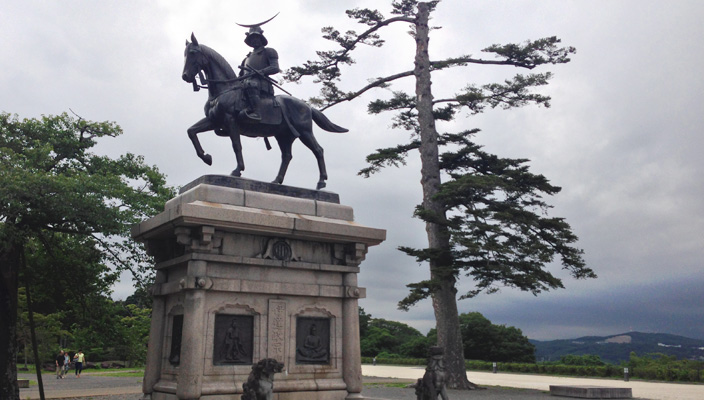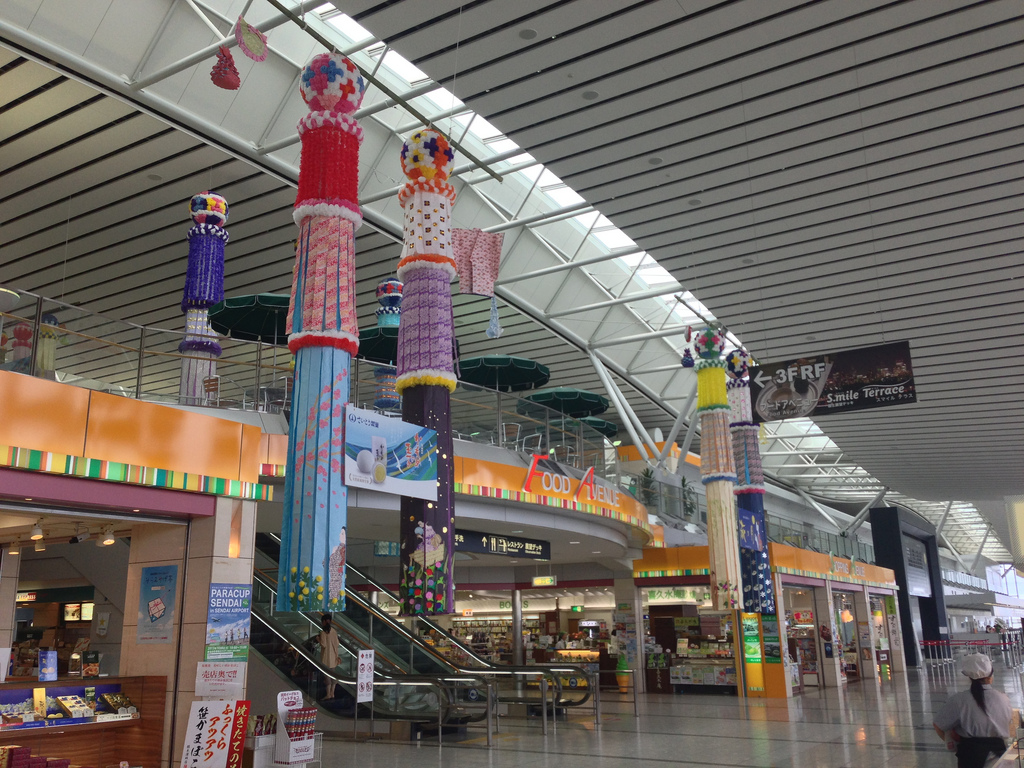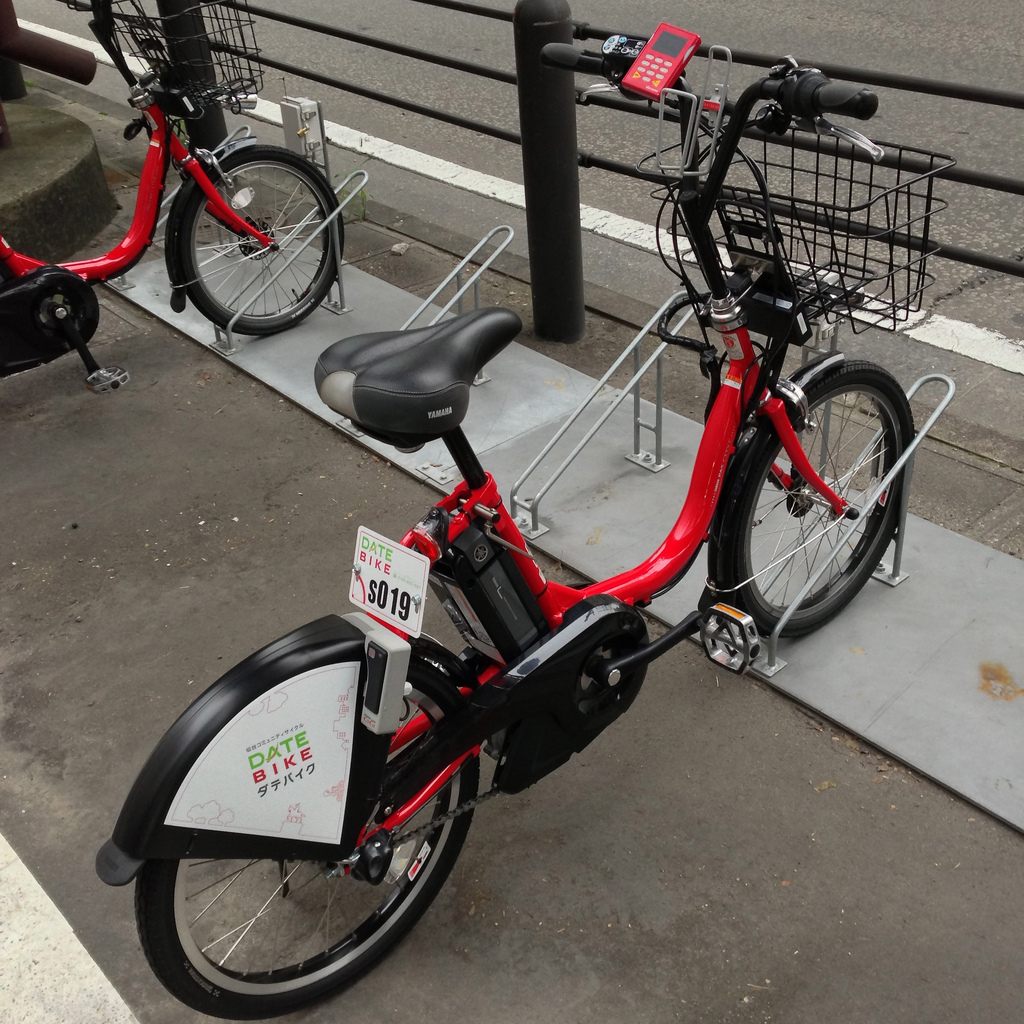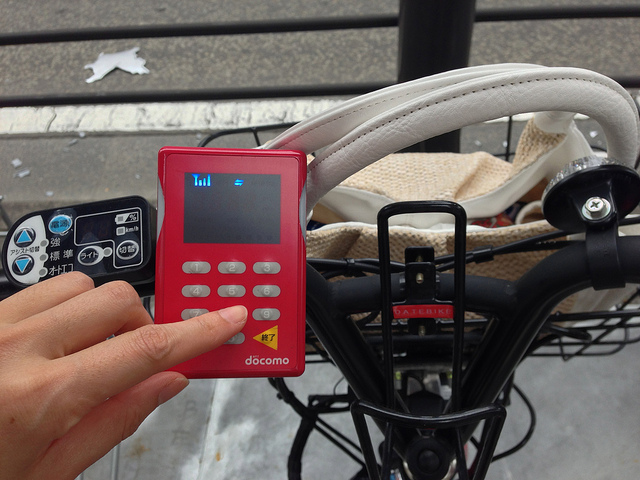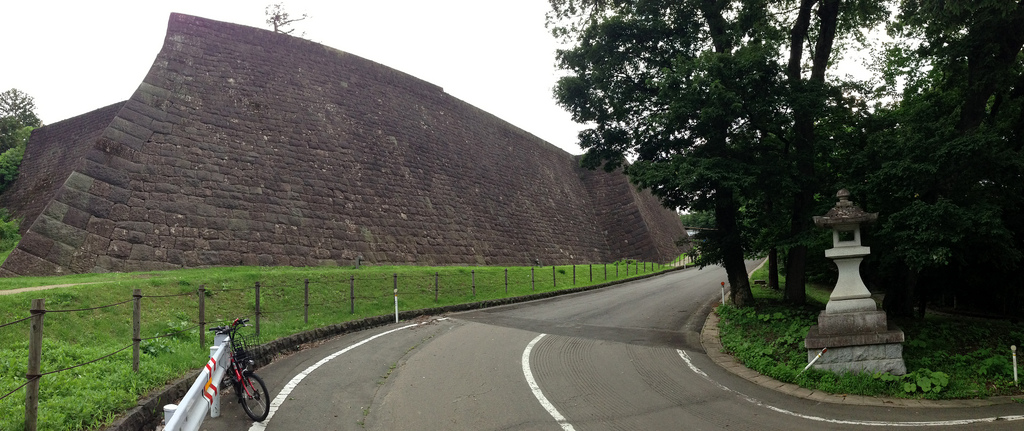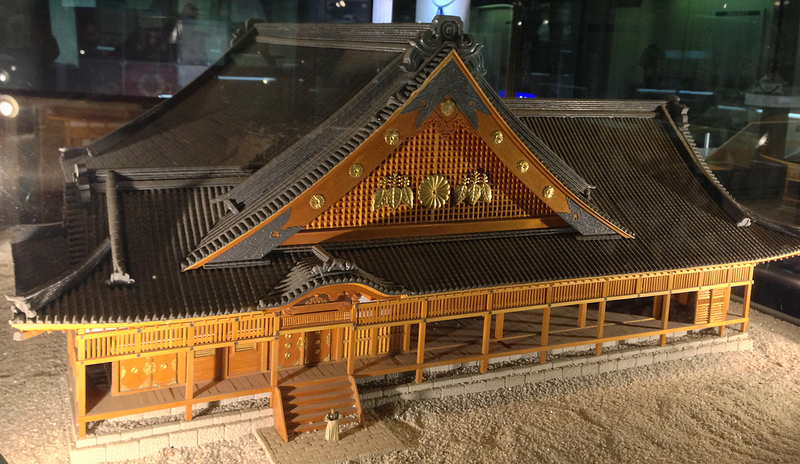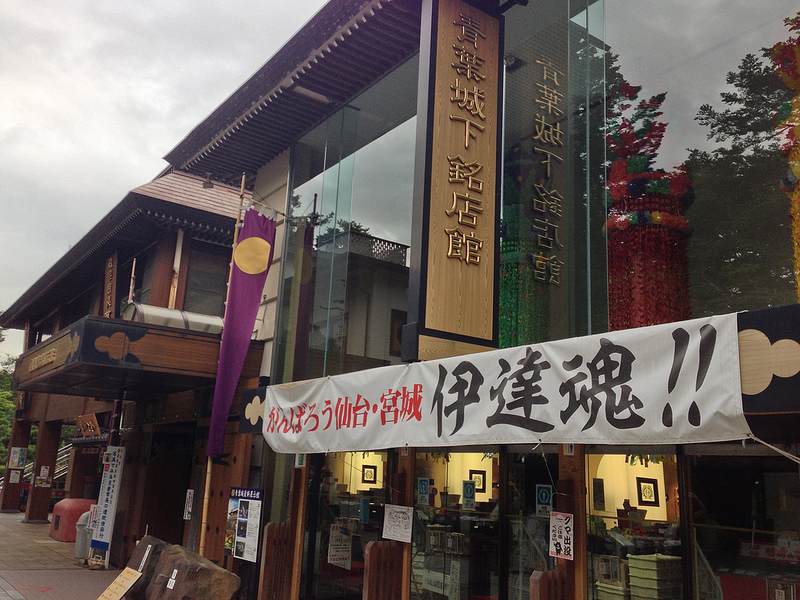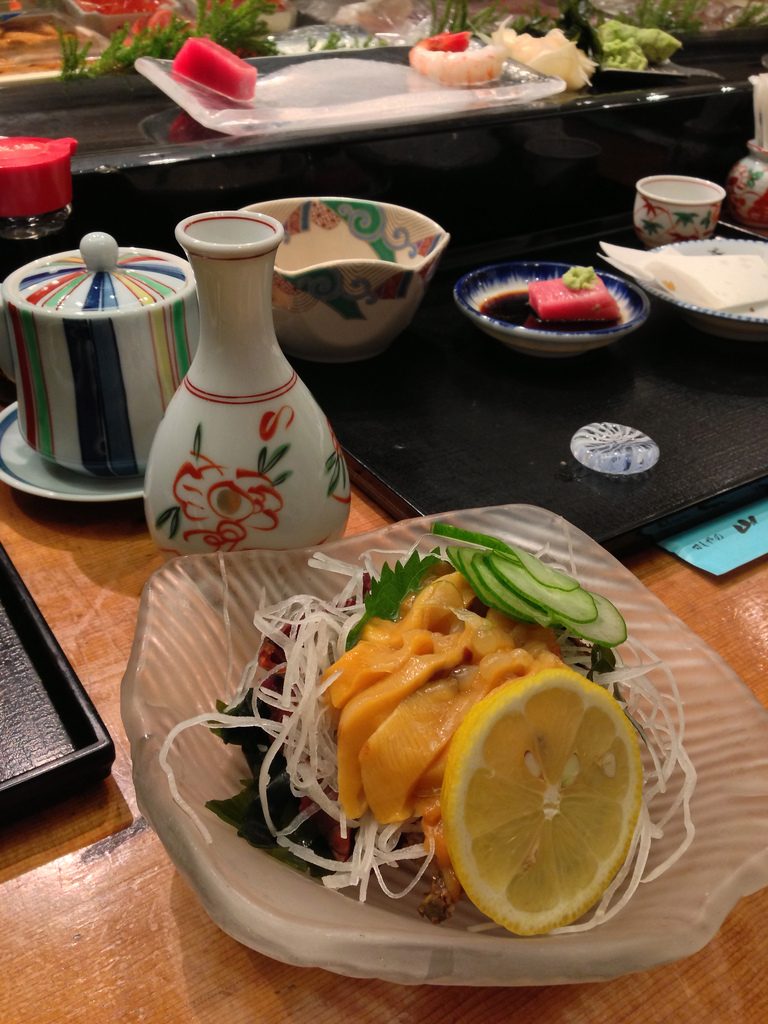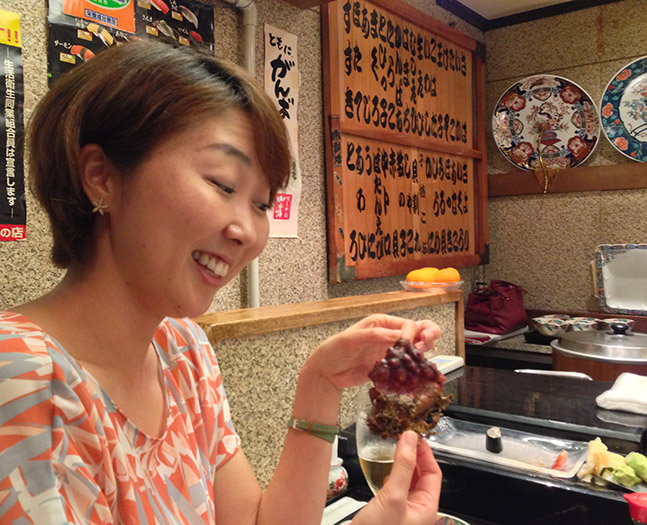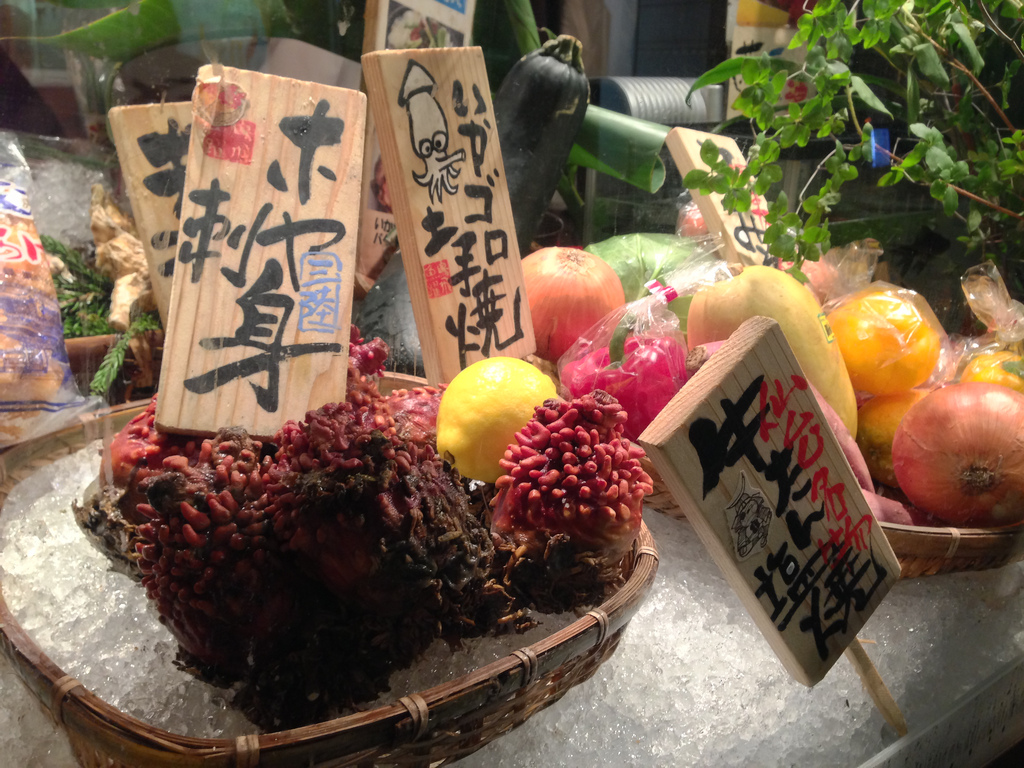Discover The Cool Summer Miyagi! Part 1: Sendai
Hot, hot summer has arrived again here in Japan. It’s been two years since I was cycling in the heat across the country. It has taken me some time to absorb and reflect on all that I’d gone through that year. I think anyone who has gone out for an out-of-the-ordinary adventure can relate to or imagine what I may have been going through. It was one concentrated time to say the least, and I needed a little bit of “offline” time. I never wanted to stop sharing what Japan has to offer though, and this is a very good start to finding more “sachi (delicacies & happiness)” again. ![]()
Last weekend, I flew to Sendai, Miyagi Prefecture to visit a friend. Sendai was where I ended of my cycling tour before taking the bullet train home, but I had not explored the city. You may recognize the name from the time when the big earthquake and tsunami hit the region in 2011.
As soon as I arrived at Sendai Airport, I felt sooo happy! I was surrounded by Sendai’s beautiful Tanabata Festival decorations. So many more of these large hanging decorations, “sasatake” made with bamboo and Japanese paper, are put up in the arcades in front of Sendai Station between August 6-8 every year. Although it was too early for the festival, parts of the city already had the pretty sasatake up in all sizes and colors. I spent nearly half hour hanging around in the airport before heading out to the city.
Another reason why I was so happy was because the airport was fully and beautifully recovered from the tsunami aftermath. When I found out about the 3.11 disaster, the first thing I saw on TV was this very airport’s runway slowly being swallowed up by the murky sea water. That was one day after the start of my cycling tour, and I was resting at a ramen restaurant far away in south western Japan. All the unforgettable emotions that I’d felt from afar as I watched it happen then were now turning into this wonderful picture. I was truly glad to be standing there.
This Tohoku (north eastern) region of Japan is generally cooler in temperature compared to Fukuoka, where I’m currently based in. I was surprised when I stepped outside of the airport to feel the breeze, about 10 degrees C lower than I was in just two hours before.
I had plenty of time to spend before seeing my friend for dinner, and what was I first going to do in the city? Look for a bicycle! I did not fly with my pink bike, Sakura, but it really took me no time to find a bike just across from the hotel.
Sendai city’s almost brand new rental bicycles are called “Date Bike” (pronounced d\![]() \te, from samurai Lord Date Masamune’s last name) with the latest system that other countries may not offer just yet. First of all, they are electric bikes. And, they come Docomo’s wirelessly connected remote control unit in which you punch in the four digit unlock code that you receive by email on your mobile phone after you register your credit card. The bike rental fee is much like Vélib in Paris, where it all started; free for the first 30 minutes, and 100 yen (US$1) for an hour thereafter (max. 1000 yen/day). Every time I locked the bike around town, I received an email, and all I had to do was to use the same 4 digit number to unlock the bike. Very simple, but it is pretty high tech. The only downside is that you have to have a mobile phone to use these bikes.
\te, from samurai Lord Date Masamune’s last name) with the latest system that other countries may not offer just yet. First of all, they are electric bikes. And, they come Docomo’s wirelessly connected remote control unit in which you punch in the four digit unlock code that you receive by email on your mobile phone after you register your credit card. The bike rental fee is much like Vélib in Paris, where it all started; free for the first 30 minutes, and 100 yen (US$1) for an hour thereafter (max. 1000 yen/day). Every time I locked the bike around town, I received an email, and all I had to do was to use the same 4 digit number to unlock the bike. Very simple, but it is pretty high tech. The only downside is that you have to have a mobile phone to use these bikes.
The big difference between Vélib (+ similar systems) and Date Bike is that these bikes are not physically connected to the bike stations. They are just parked on the simple bike stand. When I rented a bike in France, the bikes were sometimes missing parts like the chain and pedals, but I am pretty sure that is unlikely to happen here in Japan. Maybe that is also why these bikes were lighter than the smiliar bikes in other countries. I am guessing that the head office can check where each bike is located with the digital unit attached to the handlebar, much like an iPhone and its “Find my iPhone” system. And if the bike lock should get broken, the digital lock system would immediately send alert signal …is also my guess. (Click on the photos to enlarge)
With this fine electric partner, I pedaled out to see the ruins of Sendai Castle, also known as Aoba-jo (Aoba Castle) atop Mount Aoba. Boy, was I glad this bike was electric! The castle was on top of a steep hill, and this new buddy made it SO much easier to get there.
At the top, there was a statue of Lord Date Masamune, who founded the city of Sendai back in the 1600′s. He was one of the most iconic and powerful leaders at the time, and well known as Dokuganryu (one-eyed dragon) Masamune to this day. He lost his eyesight for smallpox when he was young, and according to the museum I visited, he told his trusted retainer to chop off the popped eye with a sword. Talk about manly leader!
At the Aoba-jo Museum, there was an excellent 15 minute video with CG animation to make me more interested in the region’s history. Date Masamune’s era had missionaries from countries such as the Netherlands, Portugal and Spain, and some Japanese samurai’s also traveled aboard with them across the Pacific to California and Mexico to seek trade partnerships. One of such men went to Italy and was baptized in the Roman church. What a life-or-death adventure that must have been, and imagine what Romans thought of him when they first saw this samurai man. It must have been way beyond a culture shock for both parties.
This is outside of the museum and its connected souvenir shop. It says “Ganbaro (cheer up) Sendai, Miyagi. Date Soul!!” for the recovery effort of the tsunami disaster. At this shop, I bought a little something that I will share with you in a little bit.
After all that cycling, I went to have Tohoku’s super fresh seafood at a sushi restaurant in Kokubuncho district, known for the city’s night life. All the fish was from that morning and delicious, and there is one item I must introduce to you. It was my first time having this too, and it was called, hoya. It is a regional delicacy, “sachi” of the day! ![]()
When my friend and the sushi master mentioned it, I had question marks all over my face. This is what they said to me.
“Well, hoya is not exactly a shellfish, but it is like it. And it’s got this bright red outer shell that’s plump when it’s alive, and it is known as pineapple of the ocean. Some people love it, some hate it.”
I could only imagine a weird, bumpy, red water balloon that would fit in my hand.
What came out was a plate of sliced yellow shellfish-like sashimi like jumbo clam. To my surprise, it tasted just fine to me with its distinctive fragrance that divides people’s preference. The texture was a bit firm but not too hard, and I liked it.
This is the shell. Funny looking, right?
I saw it as a whole after dinner. Yup, it looks funny! ![]()
Here are a couple of sushi pieces of ikura (left) and sujiko (right). They are both the same salmon roe, but on the left is the separated pieces, and on the right are all connected. Did you know that the word ikura is from a Russian word, ikra, which means fish eggs that includes caviar and all other fish eggs? In Japan, the word is only used for salmon eggs. The little smiley doll above the sushi is the souvenir I bought earlier at the museum. This is a miniture netsuke verion of the larger kokeshi dolls, a traditional handmade wood crafts known in the Tohoku region of Japan.
There is more fun and delicious “sachi’s” from the region in this trip. Come back for The Part 2, which will show you one of the “Three Views of Japan,” Matsushima!
« Having a Dream: The Ultimate Anti-Aging Congrats! Japanese Cuisine Now Listed As World Heritage »

